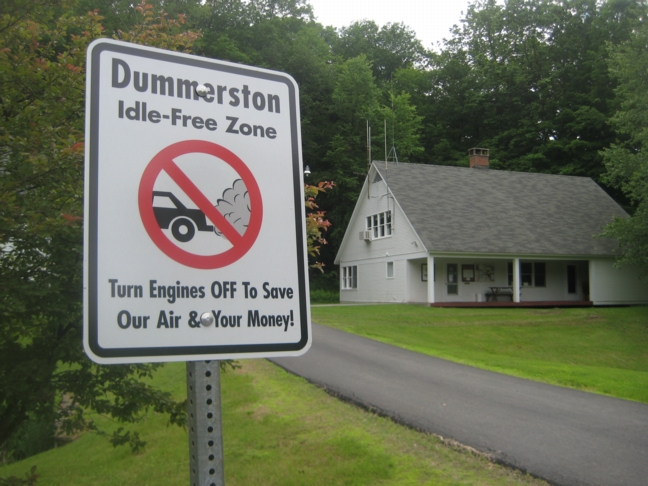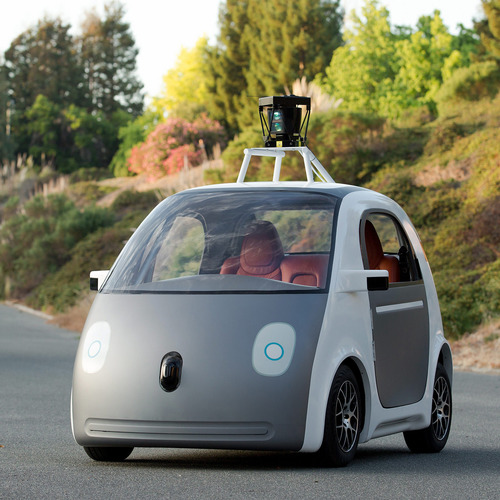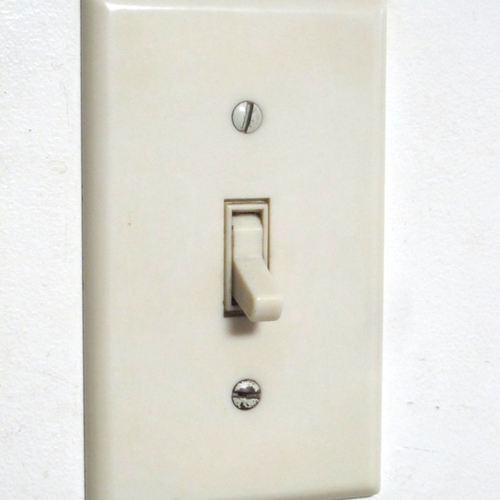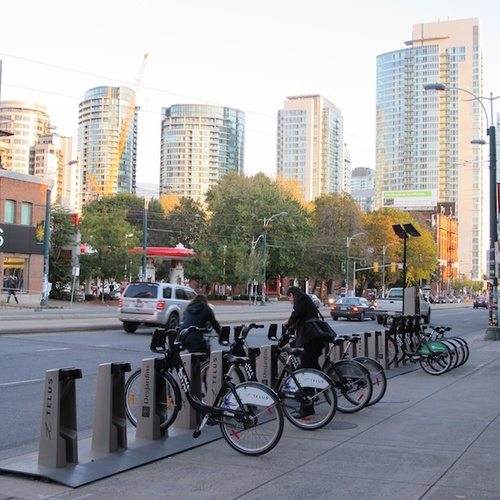
Image Credit: Stan Howe
Before the holidays I wrote a blog on how to save energy in the home by changing our behavior. This week we’ll take a look at some of the ways that we can save energy by changing our driving behavior. Below are some simple measures — most cost nothing and some even save money — to reduce your energy use for transportation.
Drive less
Leaving the car at home when you could walk of ride a bike is perhaps the most obvious way to save energy in our transportation. These options aren’t always possible, due to where we live, the weather, or the seasons, but when it is possible to walk or bike instead of driving huge savings are possible — not to mention the health benefits. The same applies at work; if you’re going out to lunch or need to run an errand, consider providing a little extra time and walking.
Carpool
Carpooling with another commuter can halve the energy consumption if the two riders live close-by or one rider can be picked up on the drive to work. With three or more riders the savings are even greater. In some places carpooling offers advantages like access to HOV (high-occupancy vehicle) lanes on highways and preferential parking.
Combine trips
When you have to drive, try to combine trips. Schedule your grocery shopping when you’re coming home from work, or run some errands when you have to drive the kids to soccer practice.
Take public transit
Most forms of public transit (busses, light rain, commuter trains) use significantly less fuel per passenger mile than a single-occupancy cars or light trucks. If public transit is an option for you (unfortunately, it often isn’t), take advantage of it. Not only will you save energy and reduce the wear-and-tear on your car, but you’ll also create time to read the newspaper, enjoy a good book, or catch up on e-mail.
Slow down
In a car, wind resistance increases at a cubed function of speed. That means that if you double your highway speed, your power requirements will increase eight-fold (2 cubed equals 8). I’ve experienced this pretty directly. One of our cars — a 2003 Honda Civic Hybrid — has a digital mileage gauge. On a number of occasions I’ve noted my fuel economy driving to the airport (when I’m running late and speeding along at 75 mph) and returning when I can putter along at a leisurely 55 mph. I haven’t done actual calculations to test that cubed function equation, but I’ve seen a dramatic difference: getting a little over 30 mpg at 75 mph, as I recall, and about 50 mpg at 55 mph.
Consumer Reports has examined this issue more thoroughly. The magazine measured the fuel economy of a 2.5-liter, 4-cylinder Toyota Camry driven at 55 mph to be 40.3 mpg, while at 65 mph the fuel economy dropped to 34.9, and driven at 75 mph it dropped to 29.8 mpg — 26 percent lower than at 55 mph.
Remove the roof rack
If you’re not using a roof rack regularly, remove it to cut down on wind resistance. Even a fairly modest roof rack can easily cut your fuel economy by a few miles per gallon.
Lighten the load
The more weight we haul around in our cars or trucks, the more energy we use. If you keep sandbags in the bed of your pick-up for winter traction, remove them in the summer. Empty your trunk of those unneeded items you’ve been carrying and never use.
Avoid jackrabbit starts and stops
With in-town driving, gradual acceleration uses significantly less fuel than pedal-to-the-metal starting and stopping. I try to accelerate as slowly as possible (without inconveniencing oncoming cars) and avoid braking whenever possible as I approach a turn or traffic light. Wayne Gerdes, who coined the term “hypermiling” (a sort-of game to dramatically exceed the rated fuel economy of a car) and who has the website CleanMPG website, recommends driving as if you don’t have working brakes.
Try to avoid coming to a complete stop — within reason
Your car uses a lot more fuel when starting from a complete stop so, when you have a choice, avoid coming totally to rest. When approaching a traffic light that’s red, for example, slow down so that you’re still moving when it turns green. Don’t violate laws or put yourself (or others) at risk in doing so, however. This isn’t a suggestion to roll through stop signs, or slow down so much when approaching a light that the driver behind you will try to swerve pass you.
Avoid idling
If the engine is running and you’re standing still, your fuel economy is zero — and an idling engine usually spews out more pollution than an engine that’s running at higher speeds. Several towns in our area, including Putney, Dummerston, and Brattleboro, now have no-idling resolutions in an effort to discourage the practice. With some vehicles, such as police cruisers and diesel equipment, there may have compelling reasons to keep the engines running, but for cars and light trucks, tuning them off usually makes sense.
Turn off cruise control on hilly terrain
Cruise control is designed to maintain constant speed, but in hilly terrain a lot of extra fuel is used in accelerating up hills. A more fuel-efficient approach is to hold the accelerator pedal in approximately the same position approaching and going over a hill; your speed will drop but fuel economy will be better. On the downhill, allow your speed to increase (within the speed limit), using gravity to boost your fuel economy.
What are your tips?
Most of these strategies are common sense. But that doesn’t mean they always occur to us. Even an energy-efficiency nut like me has to remind myself to follow these practices as I seek to conserve.
What recommendations can you add?
Alex is founder of BuildingGreen, Inc. and executive editor of Environmental Building News. In 2012 he founded the Resilient Design Institute. To keep up with Alex’s latest articles and musings, you can sign up for his Twitter feed.
Weekly Newsletter
Get building science and energy efficiency advice, plus special offers, in your inbox.















11 Comments
A/C versus windows
How about not using A/C unless really necessary? And is there data comparing the MPG impact of A/C to any reduced MPG from driving with windows down?
Ensure that tires are properly inflated,
And the engine is properly maintained.
Response to John Rockwell.
John,
Can't speak to the quality of the experiment, but I believe the "Mythbusters" tried to resolve the windows vs. A/C question:
http://dsc.discovery.com/tv-shows/mythbusters/videos/air-conditioning-vs-windows-minimyth.htm
AC vs. Windows
Found this: http://auto.howstuffworks.com/fuel-efficiency/hybrid-technology/driving-with-windows-down1.htm
and the SAE findings: http://www.sae.org/events/aars/presentations/2004-hill.pdf
Bottom line: (according to their research) use windows at 45mph or lower as much as practical. Use AC at speeds above that. Of course you can always run the "fan only" mode and cycle the AC on only when you really need it, assuming your car has that option. Most older and "less smart" cars (like my Corolla) simply have an ac button to push.
I didn't realize A/C versus
I didn't realize A/C versus windows was an urban myth! It certainly seems like at slower speeds (city driving) where the "cubed function of speed" is not such a big deal, open windows are undoubtedly the way to go.
One last question, as I'm no expert on the refrigeration cycle: is the heat dumped from any air conditioner ADDED to the environment, or is there no net gain as the the heat was already extracted from the air?
Response to John Rockwell
John,
An air conditioner moves heat -- for example, from your living room to your back yard, or from the front seat of your car to the exterior of your car.
Here's how heat is added to the environment: either at the power plant that generates the electricity to run your home air conditioner, or in your car's engine, which burns gasoline to run the belt that powers your car's air conditioner.
In addition, the compressor in your back yard (or under your car's hood) gives off some waste heat as well.
Hi Martin,
I understand the
Hi Martin,
I understand the primary energy comment. So...does an off-grid, PV-powered A/C unit add heat to the environment?
Response to John Rockwell
John,
I'm going to base my answer on the First Law of Thermodynamics, and say -- No.
But it's never that simple...
It-all depends. In a roof mounted situation the albedo of PV panels is pretty low- lower than ANY "cool roof" finish, but lower than many other possible roofing materials, resulting in a net greater absorption of solar heat. PV albedo is also lower than most soils, and many/most grasses too. So even off-grid there can be a small but very real net increase in the environmental heating due to PV. But it's quite small in comparison to the same amount of electric power generated by fossil fired generators. A very crude first-order hack of an estimate can be found here:
http://blogs.scientificamerican.com/solar-at-home/2009/10/27/the-albedo-effect/
more on solar pv
And of course there's Ray Pierrehumbert's take on it: http://www.realclimate.org/index.php/archives/2009/10/an-open-letter-to-steve-levitt/
Response to David Fay
David,
I enjoyed Raymond Pierrehumbert's analysis. Thanks for the link.
Log in or create an account to post a comment.
Sign up Log in